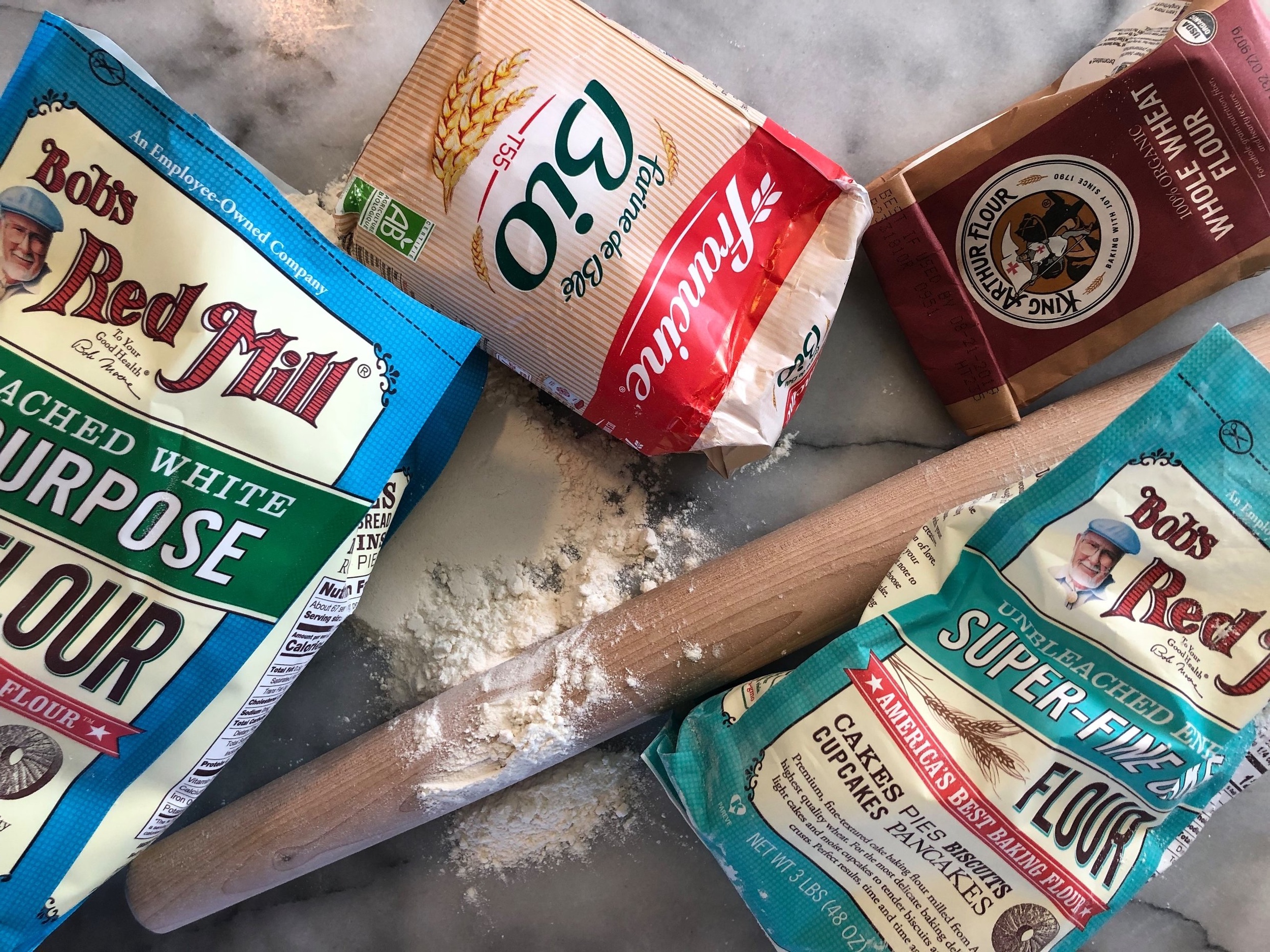All About Flour

Hello all. This post is quite an undertaking, in that there are many topics that I could write about - the production of flour, how it is grown, how American flour differentiates from others, etc. Instead, I will just give a rough guideline, and as time progresses, pertinent information will be added and re-occuring questions will be edited in. In the meantime here are some general tips about flour (gluten-free included).
Always check the expiration date for the flour. I try to buy flour that has a shelf life for at least a year, that way I know its been packaged recently and hasn’t been sitting on the store for awhile.
Keep your flours in the fridge if you have the space. At least in a sealed container. The fridge will keep it fresher longer, the sealed container will keep little buggies out (unless you already had them in it).
Buy a scale, especially for flour - you will find that your baking will improve. Don’t be stubborn about always using a measuring cup,
Buy organic flour if you can afford it, and never buy bleached flour. I’m sure eating a little bleached flour is ok every once in awhile. But all the time? Probably not the best for you.
Whole Wheat Flour You can buy different kinds of whole wheat flour at the store - pastry whole wheat, which has less protein and also 100% whole wheat flour. Anytime you bake you can replace part of the flour with whole wheat. Just know that the hydration and weight of the item might change. I would do this if you are a more skilled baker. Whole wheat flour can be anywhere from 12-16% protein. This mean that it is very glutinous. Whole wheat means just that - it is milled with the endosperm, bran and germ. This means that it has more fiber than white flour. I’ve used whole wheat flour for breads, but also tarts and some cookies. I usually mix the flour with white flours.
High Protein or Bread Flour This flour is white/cream colored and can be used for pizzas, breads (sourdoughs/rustic breads), bagels, and some pastries. The protein content is definitely higher - clocking in at around 12-14% depending on the brand. You can check the protein content on the brands website, they are hip to the fact that consumers want to know these facts.
Unbleached All Purpose Flour I use this flour for cakes, pastries, cookies, some breads (usually rolls or loaf bread), pies, and some tarts. Because different manufactures have slightly different protein content, you might want to check their website if you need specifics. Oftentimes the protein content is 9-11%, more toward the higher range. Side note: when you become more advanced in baking you can start mixing with flours and therefore have more control of the end product.
French Flour T55 and Italian 00 Flour These flours are from France and Italy, and although they are comparable to unbleached AP, they have a particular milling and production format that make them specific for certain baking. I use the french t55 flour for my croissants and danishes. If I am going to make pizza, I use the Italian 00 because it is milled specifically for pizza bread. When you read online, you can easily find more in-depth information about these two brands. Although I have never seen french flour at supermarkets, I have recently in the past 5 years seen the 00 flour often at many supermarkets. The french flour you can order online from a reputable importer. There is some talk that the Farine T55 Bio (french flour organic) does not cause digestion and gluten issues to those who would normally have sensitivities when eating American flour. This could be the processing of the wheat or even how its grown. I have not seen any scientific articles on the subject yet and will keep you informed if I do.
Pastry Flour Danishes, french tarts, delicate cookies and many other desserts utilize this flour. The protein percentage is lower on the scale around 7-9%. Not much to mention about this flour except that if a recipe mentions to use the flour, use it! It is not interchangeable with all-purpose flour. This flour isn’t the best for breads because the low protein content doesn’t enable much gluten development, please note this is a general statement.
Cake Flour Cake flour is used for cake, duh. Until recently, I couldn’t find an unbleached cake flour, but currently, Bob’s Red Mill has a wonderful unbleached cake flour - which is what I use now. It’s around 6-8% protein, again that number differentiates depending on the manufacturer and also if its unbleached or bleached. Not all cakes need cake flour by the way. For example, my go to chocolate recipe is best with all-purpose flour. Otherwise the cake is too unstable and a pain in the ass to work with.
Gluten-Free Baking Everyone knows about almond flour, and coconut flour, etc. But how does one utilize these flours when replacing traditional wheat flour? It used to be that you would formulate your own melange, but now you can purchase gluten-free flour that is supposedly able to replace 1:1 traditional flour. This one from King Arthur Flour is highly regarded, although you cannot use it for yeasted recipes.
There are many other flours that we use in baking - cornmeal, rye, rice, coconut, buckwheat, and many more. If you have interest, learning about these different types will only strengthen your baking skills.





